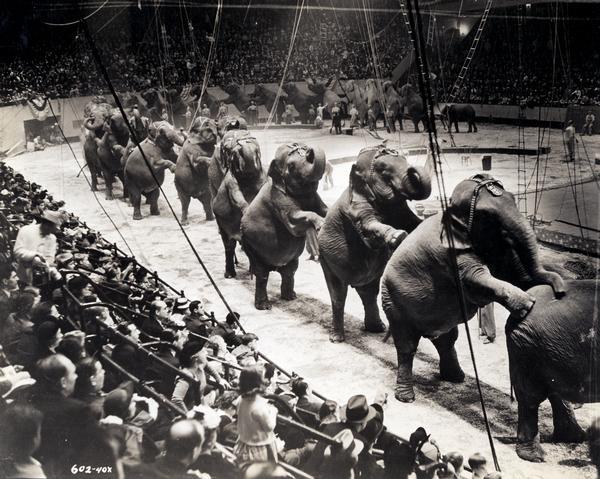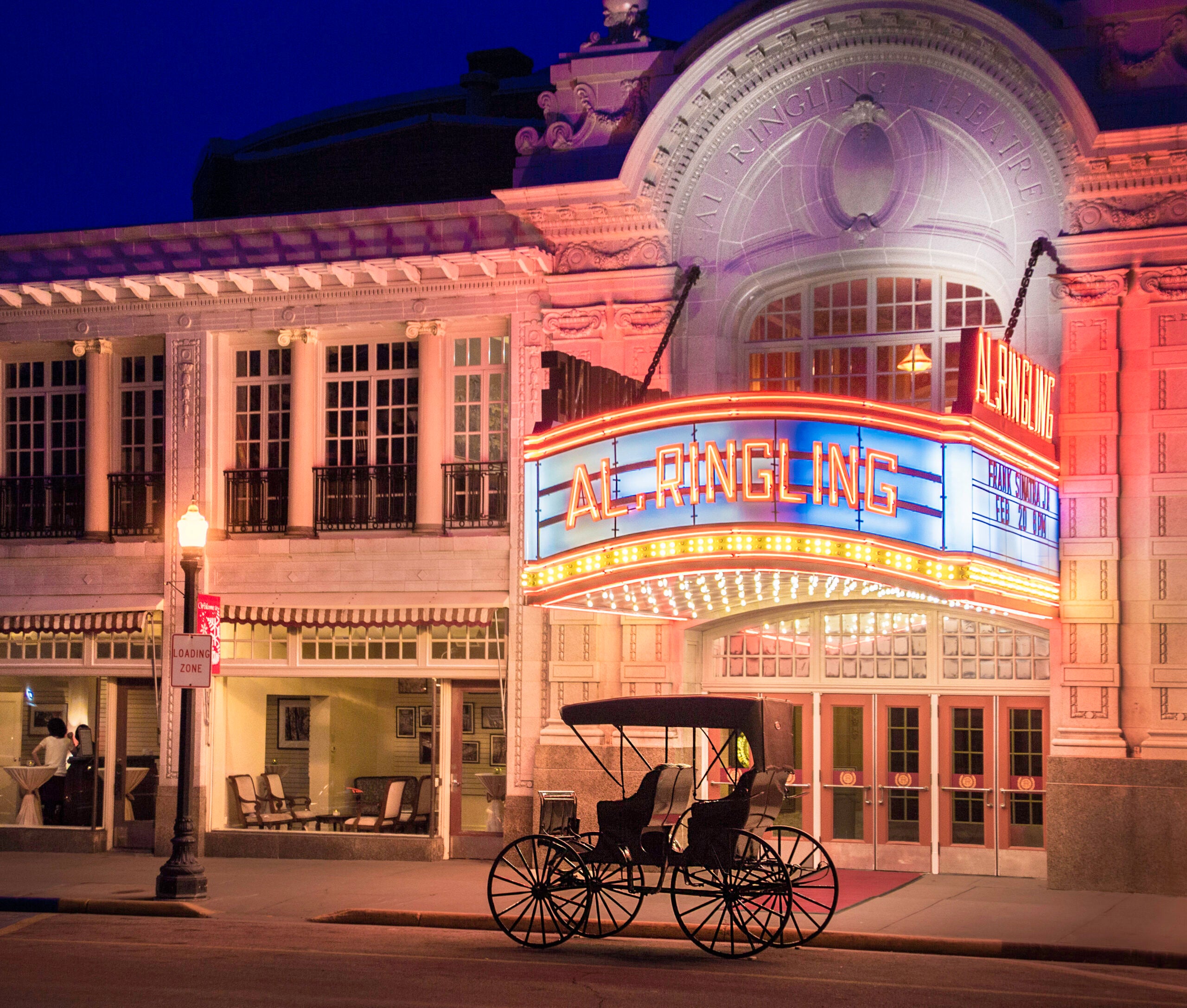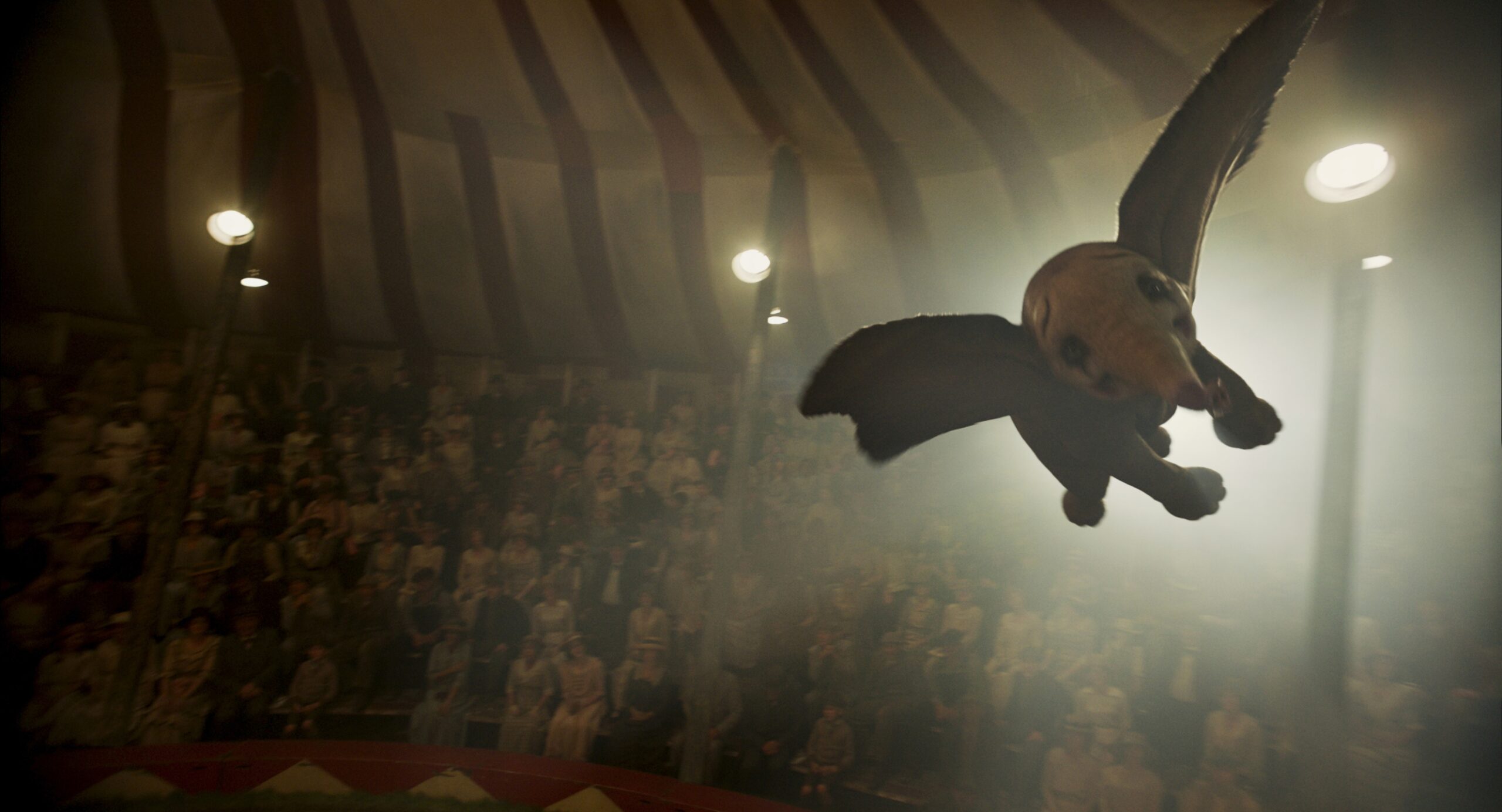Ringling Brothers and Barnum & Bailey closed for good Sunday night, marking the end of an era for a circus with deep roots in Wisconsin.
The circus began in the United States in the late 18th century in Philadelphia when Thomas Pool introduced a clown to his horse exhibition. At the time, trick horsemanship was the mainstay of the circus act.

A circus lion, covered by soapy lather, is bathed in a free-standing bathtub inside a cage.Wisconsin Historical Society
Stay informed on the latest news
Sign up for WPR’s email newsletter.
By the 1830s, traveling circuses had become a major form of entertainment, particularly in rural areas where mass entertainment was hard to come by. The expansion of the railroads in the late 19th century ushered in a golden age for the circus, and Wisconsin became a major player on the scene.
More than 100 circuses began in Wisconsin. Even as many traveled the country, they still came back to Wisconsin.
At least 20 circuses wintered in Delavan in the 19th century, drawn to its great location, ample farmland for grazing, and timber for heating and building.
Five of the seven Ringling brothers started their own backyard circus in Baraboo in the 1880s. They put on their first vaudeville-type show in Mazomanie in 1882, singing, dancing and playing music.
Animals joined the act a few years later, as did the remaining two Ringling brothers. By 1887, the brothers were touring as the “Ringling Bros. United Monster Shows, Great Double Circus, Royal European Menagerie, Museum, Caravan, and Congress of Trained Animals.”
Growth came slowly at first, but by the 1890s, the Ringlings had established their headquarters in Chicago. They kept their ties to Baraboo, wintering back in Wisconsin. After a visit to New England in 1895, the Ringlings came to an agreement with the powerhouse New York-based Barnum and Bailey Circus to perform in separate parts of the country to avoid head-on competition.
Barnum and Bailey had grown out of a circus begun in Delavan, by Dan Costello and William Cameron Coup who’d wanted to cash in on the fame of showman P.T. Barnum.
In 1875, they launched “P.T. Barnum’s Great Traveling Museum, Menagerie, Caravan, and Hippodrome.” Barnum joined forces with the Cooper and Bailey Circus in 1881, a circus well-known for its baby elephant named Columbia.
As the Ringlings grew, the brothers began to buy other circuses. By 1900, they had one of the largest traveling shows in the nation. In 1907, they bought their biggest competitor, Barnum and Bailey. The two circuses remained separate for a time but joined forces during World War I.
The circus stayed in the Ringling family until 1967. The new owners kept the name.
Wisconsin Public Radio, © Copyright 2024, Board of Regents of the University of Wisconsin System and Wisconsin Educational Communications Board.




